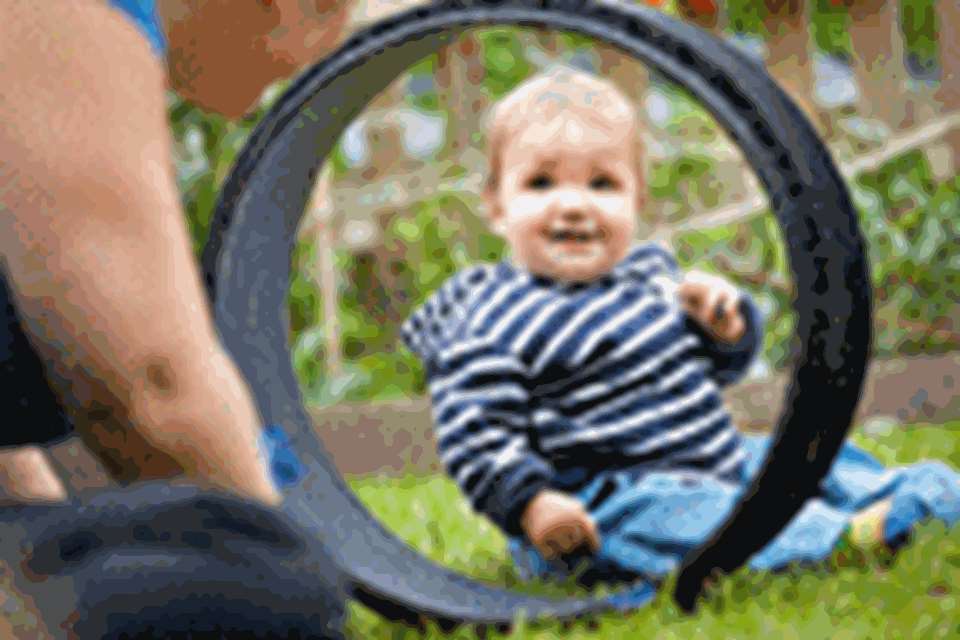Positive Relationships: Confidence - Master plan
John Hattie and Gregory CR Yates
Monday, December 16, 2013
There are three different levels of confidence, and practitioners have an important role to play in helping these to flourish in children, argue John Hattie and Gregory CR Yates in this edited extract from their new book on the science of learning.

When it comes to human activity, confidence is a term we all use freely, and as teachers we often evaluate students on the level of confidence they exhibit. But aside from our own perception, we have almost no secure index of what it means to be confident.
The term is confusing in that we use the same word to refer to three levels of confidence: the (a) global level of self-esteem, (b) domain level of perceived competency, (c) task-related level, often called self-efficacy.
SELF-ESTEEM
Our global self-esteem involves beliefs about our own self-worth. But is it our professional role to develop our students' self-esteem? Such ideas represent theories widely popular from the 1960s through to the present day. The idea is that self-esteem is the central part of the personality, the important core that requires nurturance. If we can develop positive self-regard in our students, other positive outcomes such as motivation, social responsibility and achievement will follow.
In the 1970s, one version of the theory had it that raising self-esteem through programmes within schools would alleviate societal problems such as teenage pregnancies, crime, drug abuse and poverty. In essence, every social problem can be ascribed to people's lack of self-regard. The theory is interesting, optimistic and challenging, but wrong.
The trouble with such an approach has been that of ugly data. From the 1970s on, studies began to show that self-esteem increase is the natural outcome of successful life adjustment, rather than being its root cause. For example, in schools, when students achieve well, increases in self-esteem will tend to follow, rather than precede, the gains in learning.
PERCEIVED COMPETENCIES
The second major way we normally use the term confidence concerns what you feel you are 'good at'. You can mentally divide your skills into different areas. Your overall self-esteem cannot necessarily provide you with domain-related confidence. Having overall high self-esteem is irrelevant to how confident you feel about painting your house.
However, it is the case that, as students succeed in school they naturally develop an overall academic self-concept because school can be such an important part of their whole life. We want our students to have confidence, pride, and expectations of success as learners, so developing academic self-concept is crucially important.
SELF-EFFICACY
Efficacy is an old word meaning to achieve an effect, or to accomplish. Self-efficacy is indicated by one's confidence level about being successful at the next task on your life agenda. Hence, this level is not so much domain-related as it is task-related. Instead of being something you can carry around with you (such as your esteem and perceived competencies), your efficacy is confidence for succeeding on the very task you can see there in front of you.
So this aspect of confidence is an actual judgment, made in real time, rather than a feeling about what type of person you think you are. Also note how this form of confidence is not about your being 'good at' anything. Instead, it is your expectancy that you will cope well with the task you can see, in the here-and-now, or within the immediate future.
EDUCATIONAL IMPLICATIONS
So what are the educational implications of this analysis? First, positive esteem and pride in oneself are commodities that can follow from being successful at learning. But esteem has to have a secure basis in reality. High self-esteem can be an indication of social and scholastic success, but raising self-esteem cannot necessarily raise school achievement.
Second, the crucial factor underlying confidence is the self-efficacy response, which in turn hinges on accessing awareness that the tasks you face in life are inherently doable. But the structure of knowledge within the world is complex. The curriculum we expect students to master is large, extensive, and based upon multiple and cumulative elements.
As students, we each begin the journey with initial optimism. However, as the gradient of difficulty changes so does the basis of our confidence. Being able to perceive the links between what you did in the past successfully and where the journey is going today is the only known path to maintaining confidence-based motivation and coping.
There can be two cycles of effect relating to confidence and the self. The vicious cycle involves convincing oneself that one cannot succeed on a task or challenge and thus not investing effort, not listening to instruction, and not receiving feedback, so leading to evidence that one was right - one cannot succeed. The virtuous cycle involves convincing oneself that one might succeed at a task or challenge and thus investing effort, listening and even seeking instruction, welcoming errors as opportunities to learn, and receiving feedback, leading to evidence that one was right.
The way out of the vicious cycle is to keep demonstrating the value of investment, listening, seeking and receiving the power of feedback, and then providing evidence of the effects of these instructional cues to assist in moving to 'I think I can, I think I can ... I now know I can'.
In short, teachers play a vital role in helping their students achieve confidence in their ability to cope with the pressures of the modern school curriculum.
HELPING DEVELOP ACADEMIC CONFIDENCE
The two major ways we influence students' confidence are through teaching and motivating.
First: use active teaching strategies
- Use 'can do' language abundantly (ie, everyone will learn).
- Use active direct teaching methods in short bursts, ensure that skills are beautifully taught with clarity, good methodologies, use of prior knowledge, well-mapped metaphors, and so on.
- Ensure all students engage with materials. Ensure movement from 'easy' to 'harder'. Try to programme scaffolds (for example, hints, cues, additional resources, or peers that help), so that all learners feel able to move forwards in your classroom.
Second: use active motivational strategies
- Help students 'own' products of their academic work. Ensure that everyone has products of which they can be proud.
- Rather than focus on ability, subtly attribute success to effort. Convey the message that effort is cyclical, or comes in bursts (ie, effort is temporary, but infinitely renewable).
- Emphasise how current challenges relate to past problems. Goals set today are building on the past. There are always common elements, prior knowledge and underlying schemata, and learning is always cumulative.
- Ensure high levels of feedback serving a corrective function. Be careful not to overdo generalised praise ('You are such a wonderful person'). Any such praise has to be tied to reality, justified by the context and appreciated by the recipient. In general, praise is an ineffective motivator.
- Recognise the individuality of your students. Know them as real people with personal lives. Learn how to sit down next to individuals, to talk and listen. Make written notes, a file, of what you know of their likes and values. Such knowledge is invaluable in adjusting teaching in individual feedback and remedial work.
- Directly teach healthy attributions. Do not get sucked into negative attributions or discussions about things such as 'I can't do maths' or 'I am useless'. Recognise that helplessness is often manipulative and produced in defence of self-worth. The problem for teachers is to avoid reinforcing self-defeating cognitions. If a student's learning failure has to be explained then teachers can cite one of the following diverse attributions: (a) lack of input (not paying attention, student missed lesson, concept just not taught well); (b) lack of practice (moving into harder materials too soon); (c) a gap in knowledge or 'buggy algorithms'; (d) lack of effort, possibly due to student getting life priorities unbalanced; (e) goals way too high, without short-term goals in place, hence a bridge too far.
- One underlying principle to communicate is that ability simply is not fixed. Ability is the natural result of applied effort. Learning takes time so a sound strategy is to reset goals and expectations to realistic levels.
- Actively discourage social comparisons; instead, emphasise goals in terms of personal progressions that take place over time.
This is an edited version of 'Confidence and its three hidden levels', chapter 24 of Visible Learning and the Science of How We Learn by John Hattie and Gregory CR Yates (Routledge 2013)
THE SCIENCE OF HOW WE LEARN 
John Hattie's Visible Learning (2009) presented not what was fashionable or political in education but what actually worked for improving children's learning in schools. On publication, it became an instant bestseller and was described by the TES as revealing education's 'holy grail'. Now in his latest book, Hattie (professor and director of the Melbourne Education Research Institute at the University of Melbourne, Australia) joins forces with cognitive psychologist Gregory CR Yates to build on the data and legacy of the original project.
Visible Learning and the Science of How We Learn explains the major principles and strategies of learning in an accessible, engaging and thought-provoking style. Its three main sections are 'Learning within classrooms', 'Learning foundations' and 'Know thyself', while topics covered include: thinking fast and thinking slow; the psychology of self-control; and the role of conversation at school and at home.
Visible Learning and the Science of How We Learn was published on 27 September 2013 and costs £24.99. Routledge is pleased to offer Nursery World readers a 20 per cent* discount when purchased via www.routledge.com. To receive the discount, please enter discount code NURSERY14.
*Please note that this discount is only available on purchases made via www.routledge.com and cannot be combined with any other discount or offer. Discount offer ends 31/03/2014.










